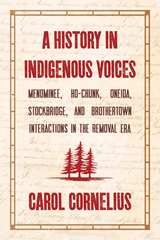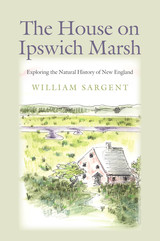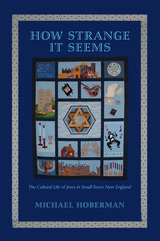149 books about New England and 3
start with H
149 books about New England and 3
149 books about New England
3 start with H start with H
3 start with H start with H

A History in Indigenous Voices
Menominee, Ho-Chunk, Oneida, Stockbridge, and Brothertown Interactions in the Removal Era
Carol Cornelius
Wisconsin Historical Society Press, 2023
A history of Wisconsin’s Indigenous past, present, and future—in Native peoples’ own words.
Treaties made in the 1800s between the United States and the Indigenous nations of what is now Wisconsin have had profound influence on the region’s cultural and political landscape. Yet few people realize that in the early part of that century, the Menominee and Ho-Chunk Nations of Wisconsin signed land treaties with several Indigenous nations from New York State. At the onset of the removal era, these eastern nations, including the Oneida Nation and the Six Nations Confederacy, were under constant pressure from the federal government and land speculators to move to lands around Green Bay and Lake Winnebago. In this groundbreaking book, Carol A. Cornelius has compiled a careful account of these nation-to-nation treaties, in large part in the words of those Indigenous leaders who served as the voices and representatives of their nations. Drawing on a rich collection of primary sources, Cornelius walks readers through how, why, and for whom these treaties were made and how the federal government’s failure and unwillingness to acknowledge their legitimacy led to the further loss of Indigenous lands. The living documents transcribed here testify to the complexity and sovereignty of Indigenous governance then and now, making this volume a vital resource for historians and an accessible introduction to Indigenous treatymaking in Wisconsin.
Treaties made in the 1800s between the United States and the Indigenous nations of what is now Wisconsin have had profound influence on the region’s cultural and political landscape. Yet few people realize that in the early part of that century, the Menominee and Ho-Chunk Nations of Wisconsin signed land treaties with several Indigenous nations from New York State. At the onset of the removal era, these eastern nations, including the Oneida Nation and the Six Nations Confederacy, were under constant pressure from the federal government and land speculators to move to lands around Green Bay and Lake Winnebago. In this groundbreaking book, Carol A. Cornelius has compiled a careful account of these nation-to-nation treaties, in large part in the words of those Indigenous leaders who served as the voices and representatives of their nations. Drawing on a rich collection of primary sources, Cornelius walks readers through how, why, and for whom these treaties were made and how the federal government’s failure and unwillingness to acknowledge their legitimacy led to the further loss of Indigenous lands. The living documents transcribed here testify to the complexity and sovereignty of Indigenous governance then and now, making this volume a vital resource for historians and an accessible introduction to Indigenous treatymaking in Wisconsin.
[more]

The House on Ipswich Marsh
Exploring the Natural History of New England
William Sargent
University Press of New England, 2015
In 2003, Bill Sargent bought a big pink house in Ipswich, Massachusetts. His home sits on what is known as the Great Marsh, a fascinating patch of wetland shared by Massachusetts and New Hampshire. Sargent received a grant to study some of the rare and endangered ground-nesting birds that inhabit the public land adjacent to his property. Ipswich Marsh is about these birds, but much else as well. Organized by the seasons of the year, The House on Ipswich Marsh features Sargent’s trademark interplay of information about the natural world, ecology, and politics. In “Spring,” the reader learns about the geological history of the Marsh; the migration patterns of bobolinks; the courtship flights of woodcocks; ticks and Lyme disease; the mating of horseshoe crabs and the underwater arrival of zooplankton, fish eggs, and moon jellyfish. “Summer” introduces plate tectonics and glaciers; sea level rise and glacial rebound; diving at night among lobsters and stone crabs; a day on Crane’s Beach; and a bike trip on Argilla Road. “Autumn” illuminates fishing; the natural and cultural history of Hog Island; harvest time on Appelton Farm; and a Native American Thanksgiving. “Winter” describes the formation of dunes and sandbars; the mating behavior of seals; coyote hunting deer at night; and a late-winter blizzard in which Sargent spies a red-tailed hawk, waiting, like the author, for the return of spring.
[more]

How Strange It Seems
The Cultural Life of Jews in Small-Town New England
Michael Hoberman
University of Massachusetts Press, 2008
Jews have lived in small-town New England since the colonial era, but during the last hundred years they have been especially active contributors to the region's cultural life. Part oral history, part ethnography, and part literary portrait, How Strange It Seems tells the story of this often overlooked group, tracing its patterns of settlement, economic activity, civic involvement, and religious life since the late 1800s. Based on more than fifty interviews with men and women of all ages from Maine, New Hampshire, Vermont, Massachusetts, and Connecticut, it seeks to understand what is distinctive—and not so distinctive—about contemporary Jewish communities outside the larger urban centers of the Northeast. Michael Hoberman weaves the personal stories of these individuals and families into a collective narrative that offers as much folklore as history and is equal parts Jewish and Yankee. He introduces us to Hiram Adelman, a Russian immigrant peddler and potato farmer who settled in northernmost Maine because its climate was comparable to his native Siberia, and to Shmuel Simenowitz, an urban transplant who produces kosher maple syrup in southern Vermont. We also meet Suzie Laskin, who moved to the White Mountains region of New Hampshire in the 1900s and soon established a local havurah, and Bob August of Whately, Massachusetts, who once ran what may have been the world's only Christmas tree farm owned by a Jewish family. Each section of the book explores how small-town New England Jews have both departed from and mimicked the broader patterns of Jewish American experience, while also illustrating how they have acclimated themselves to local practices without relinquishing a strong sense of Jewish identity. Accompanying the text are photographs by Janice Sorensen that include portraits of many of the interviewees and lively glimpses of the region's present-day Jewish revival.
[more]
READERS
Browse our collection.
PUBLISHERS
See BiblioVault's publisher services.
STUDENT SERVICES
Files for college accessibility offices.
UChicago Accessibility Resources
home | accessibility | search | about | contact us
BiblioVault ® 2001 - 2024
The University of Chicago Press









